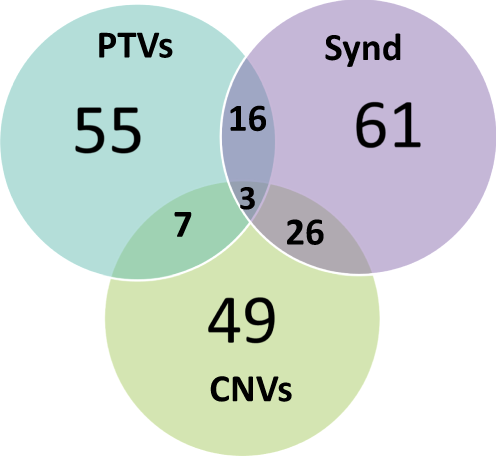Translational Psychiatry ( IF 6.8 ) Pub Date : 2020-02-24 , DOI: 10.1038/s41398-020-0760-7 Thomas Husson 1, 2 , François Lecoquierre 1 , Kevin Cassinari 1 , Camille Charbonnier 1 , Olivier Quenez 1 , Alice Goldenberg 1 , Anne-Marie Guerrot 1 , Anne-Claire Richard 1 , Valérie Drouin-Garraud 1 , Anne-Claire Brehin 1 , Maryam Soleimani 1 , Romain Taton 3 , Maud Rotharmel 2 , Antoine Rosier 3 , Pascal Chambon 1 , Nathalie Le Meur 1 , Géraldine Joly-Helas 1 , Pascale Saugier-Veber 1 , Anne Boland 4 , Jean-François Deleuze 4 , Robert Olaso 4 , Thierry Frebourg 1 , Gael Nicolas 1 , Olivier Guillin 1, 2 , Dominique Campion 1, 2

|
Autism spectrum disorder (ASD) is a neurodevelopmental disorder with a strong genetic component whose knowledge evolves quickly. Next-generation sequencing is the only effective technology to deal with the high genetic heterogeneity of ASD in a clinical setting. However, rigorous criteria to classify rare genetic variants conferring ASD susceptibility are currently lacking. We have performed whole-exome sequencing to identify both nucleotide variants and copy number variants (CNVs) in 253 ASD patients, including 68 patients with intellectual disability (ID) and 90 diagnosed as Asperger syndrome. Using explicit criteria to classify both susceptibility genes and susceptibility variants we prioritized 217 genes belonging to the following categories: syndromic genes, genes with an excess of de novo protein truncating variants and genes targeted by rare CNVs. We obtained a susceptibility variant detection rate of 19.7% (95% CI: [15–25.2%]). The rate for CNVs was 7.1% (95% CI: [4.3–11%]) and 12.6% (95% CI: [8.8–17.4%]) for nucleotide variants. The highest rate (30.1%, 95% CI: [20.2–43.2%]) was obtained in the ASD + ID subgroup. A strong contributor for at risk nucleotide variants was the recently identified set of genes (n = 81) harboring an excess of de novo protein truncating variants. Since there is currently no evidence that the genes targeted here are necessary and sufficient to cause ASD, we recommend to avoid the term “causative of ASD” when delivering the information about a variant to a family and to use instead the term “genetic susceptibility factor contributing to ASD”.
中文翻译:

自闭症谱系障碍的罕见遗传易感性评估:检出率和实际应用。
自闭症谱系障碍(ASD)是具有强大遗传成分的神经发育障碍,其知识发展迅速。下一代测序是在临床环境中应对ASD高度遗传异质性的唯一有效技术。但是,目前尚缺乏严格的标准来对赋予ASD敏感性的罕见遗传变异进行分类。我们已经进行了全外显子组测序,以识别253名ASD患者中的核苷酸变异体和拷贝数变异体(CNV),其中包括68位智力残疾(ID)和90位被诊断为阿斯伯格综合症的患者。使用明确的标准对易感性基因和易感性变体进行分类,我们对属于以下类别的217个基因进行了优先排序:综合症基因,带有大量从头蛋白截短变异体的基因和罕见CNV靶向的基因。我们获得的磁化率变异检测率为19.7%(95%CI:[15–25.2%])。核苷酸变异体的CNV发生率为7.1%(95%CI:[4.3-11%])和12.6%(95%CI:[8.8-17.4%])。在ASD + ID子组中,最高发生率(30.1%,95%CI:[20.2–43.2%])。最近鉴定出的一组基因是造成高风险核苷酸变体的重要因素(n = 81)含有过量的从头蛋白质截短变体。由于目前尚无证据表明此处靶向的基因是引起ASD的必要和充分条件,因此我们建议在将有关变体的信息提供给家庭时避免使用术语“ ASD致病”,而应使用术语“遗传易感性因子”为ASD做出贡献”。


























 京公网安备 11010802027423号
京公网安备 11010802027423号